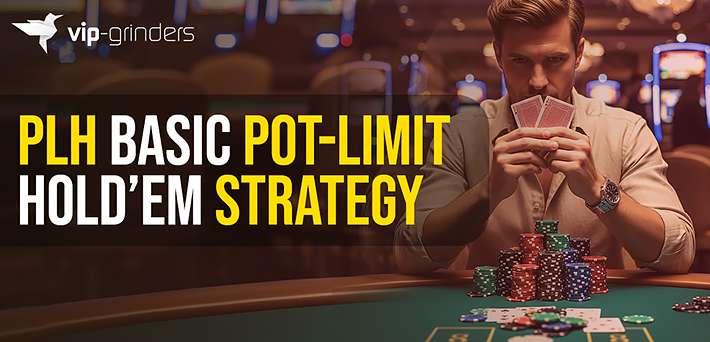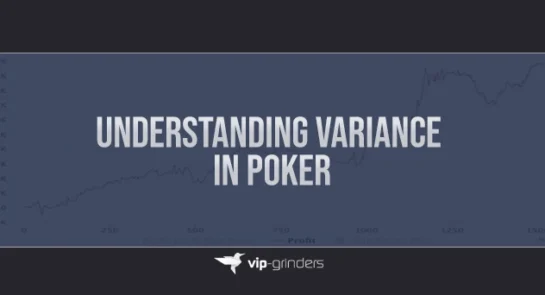Pot-Limit Hold’em Strategy and Tips
What Is Pot-Limit Hold’em?
In Pot-Limit Hold’em, the rules are the same as standard Texas Hold’em — but the betting structure changes everything. You can bet or raise up to the current size of the pot, but no more. There are no all-ins beyond pot size (unless you’re short-stacked). This creates a controlled betting environment that limits volatility and emphasizes post-flop decision-making.
- Example: If the pot is $100 and your opponent bets $50, the maximum you can raise is:
$100 (pot) + $50 (opponent’s bet) + $50 (your call) = $200 total.
This limitation changes the dynamics of the game — from preflop aggression to postflop leverage.

Pot-Limit Hold’em Rules
- Hole Cards: Each player is dealt two private hole cards.
- Community Cards: Five shared cards are dealt face-up in stages: flop (3 cards), turn (1 card), and river (1 card).
- Betting Rounds: There are four betting rounds—preflop, flop, turn, and river.
- Pot-Limit Betting: The maximum raise or bet on any street is limited to the current size of the pot. Calculating pot size includes all chips currently in the pot plus any outstanding bets and the amount needed to call.
Preflop Strategy in Pot-Limit Hold’em
The biggest difference from NLHE preflop is the limited ability to isolate and pressure opponents. That changes how you open, call, and re-raise. If you have read our guides on Pot Limit Omaha, much of the Preflop strategy will sound familiar.
Opening PLH Ranges
You’ll generally play slightly tighter in Pot-Limit Hold’em than in other Hold’em formats. Without the threat of a full shove, weaker hands have more opportunity to see a flop — making postflop skill more critical.
| Position | Typical PLHE Open Range (100BB) | Notes |
|---|---|---|
| UTG | 77+, AJo+, KQo, ATs+, KTs+, QJs | Tight; focus on equity retention |
| CO | 55+, A9s+, KJo+, QTs+, JTs, T9s | Mix more suited connectors |
| BTN | 44+, A7s+, K9s+, Q9s+, 98s+, 87s+, ATo+ | Most flexible range |
| SB | 66+, ATs+, KTs+, QJs, AJo+ | Playable but cautious; out of position |
| BB | Defend tighter; avoid weak offsuit holdings | Depends heavily on open size |
3-Bets and 4-Bets in Pot-Limit Hold’em: Explained and Expanded
In Pot-Limit Hold’em, 3-bets tend to be more value heavy than polarized because it’s harder to bluff players off marginal hands. Unlike no-limit games where large sizing can force folds, pot-limit sizing limits your leverage.
Flat-calling in position with medium-strength hands often has higher EV than raising. This is because raising out of position can commit you to larger pots with vulnerable holdings; meanwhile, calling lets you control pot size and keep weaker hands in for value or bluff. In position, you can capitalize on post-flop informational and positional advantages, exploiting opponents on later streets.
Worked PLH Hand Example:
Stacks: 100bb
- Hero (BTN): K♦ J♦
- Opponent (CO open): A♣ Q♠
- Preflop: CO opens to 3bb, Hero flat-calls (instead of 3-betting).
- Flop: Q♦ 9♠ 5♣
- Action: Hero checks; CO bets half pot; Hero calls.
- Turn: 7♦
- Action: Hero fires small delayed c-bet leveraging position; opponent folds.
Explanation: Hero’s flat call preflop keeps the pot manageable and allows positional control on the flop and turn. Raising preflop might have put Hero in an uncomfortable situation, bloating the pot out of position or polarizing Hero’s range unnecessarily.
4 Pot-Limit Holdem Tips:
- 3-bet sizing in pot-limit games usually scales to about 3x the original raise when in position and slightly larger (3.5-4x) out of position.
- 4-bets should be consistent in size to avoid giving away hand strength — typically 2.2–2.8x the 3-bet size in no-limit Hold’em; pot-limit adds a cap based on pot size.
- Use 3-bets to apply pressure on loose openers or isolate weaker players.
- Against tight or nitty opponents, consider flat-calling with strong medium holdings to maximize post-flop edge.
Postflop Strategy and Pot Control in Pot Limit Hold’em
Pot Limit Hold’em (PLHE) is a game of measured aggression where every bet must earn its place. Unlike no-limit, you can’t just put opponents to the test with massive bets; pot size limits force more deliberate actions.
PLH Flop Play
- Default bet sizing ranges from half-pot to two-thirds pot, balancing value and control.
- Avoid potting flops with one-pair or medium-strength hands unless the board is dry and unlikely to help opponents.
- Pot-size bets represent strong made hands or powerful draws. These bets signal strength and protect your equity.
PLH Turn and River Play
- Control pot growth: large pots mean expensive future raises. Keeping the pot manageable preserves flexibility.
- Bet roughly half-pot on turns to maintain pot balance, leaving room to maneuver on later streets.
- Use block bets (typically ¼–⅓ pot) when unsure or to induce bluffs.
PLH Bluffing and Semi-Bluffing
- Bluffs carry less fold equity in PLHE due to capped bet sizing.
- Instead of forcing folds with big bets, rely on equity-based semi-bluffs (e.g., betting strong draws) combined with positional pressure to apply effective aggression.
Variance and Bankroll Management in Pot Limit Hold’em
Variance in Pot Limit Hold’em sits between Limit Hold’em and Pot Limit Omaha. You experience fewer wild swings than PLO due to controlled pot sizes, but the equity edges tend to be narrower than in limit games.
Effective pot control reduces volatility, but disciplined bankroll management remains essential. The recommended bankroll for cash games is 50–70 buy-ins; for tournaments, maintain 100 buy-ins or more to weather natural swings.
Additionally, factor in rake effects—pot caps slow down win-rate accumulation compared to no-limit games, making long-term results require patience and proper roll management.
Comparing No-Limit vs Pot-Limit Hold’em
| Concept | No-Limit Hold’em | Pot-Limit Hold’em |
|---|---|---|
| Max bet | Entire stack | Pot size |
| Bluff frequency | High | Moderate |
| Variance | High | Medium |
| Skill emphasis | Aggression, pressure | Precision, calculation |
| Edge source | Fold equity | Postflop skill, sizing discipline |
3 Pot-Limit Hold’em Key Takeaways
- PLHE rewards control.
- Focus on sizing discipline and long-term EV.
- Use position to dictate bet sizes and avoid bloating pots unnecessarily.
Pot-Limit Hold’em FAQs
Can you go all-in in Pot-Limit Hold’em?
Only if your remaining stack is smaller than the pot-size cap.
Why is PLHE less common than NLHE?
No-Limit is more marketable and faster-paced, but PLHE rewards patient technical players.
Should I play tighter or looser in PLHE?
Tighter, especially preflop — fewer hands can force folds postflop.
Is bluffing still profitable?
Yes, but it must be tied to equity or strong blockers, not pure air.
What is the best stack size for PLHE?
100BB is ideal — deep enough for strategic play, shallow enough to limit variance.
What are common post-flop mistakes players make?
The biggest leaks include:
- Over-c-betting wet boards without range advantage.
- Failing to plan turn and river lines after flop aggression.
- Overvaluing one-pair hands in low SPR pots.
- Ignoring position when sizing bets.
Strong post-flop play comes from connecting your pre-flop logic with real-time board interaction.



















